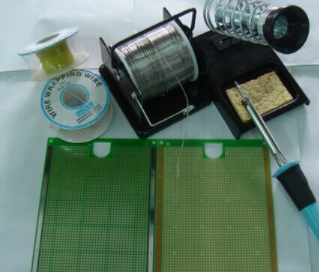In ordinary PCB design, we will encounter various safety spacing problems, such as the spacing between the hole and the pad, the spacing between the line and the line, etc., which should be taken into account. So today we divide these spacing requirements into two categories, one is: electrical safety spacing; The other is: non-electrical safety spacing.

First, electrical safety spacing:
1. Spacing between wires:
According to the PCB manufacturer's production capacity, the spacing between the wiring should not be less than 4MIL. Line spacing, also line to line, line to pad spacing. Well, from the point of view of our production, the bigger the better, of course, if conditions permit. A regular 10MIL is more common.
2. Pad aperture and pad width:
According to the PCB manufacturer, the pad aperture shall not be less than 0.2mm if drilled mechanically, or 4mil if drilled by laser. The aperture tolerance is slightly different according to the plate. Generally can be controlled within 0.05mm. Pad width shall not be lower than 0.2mm.
3. Spacing between pads:
According to the processing capacity of PCB manufacturer, the distance between pad and pad shall not be less than 0.2mm.
4. Spacing between copper skin and plate edge:
The distance between the charged copper skin and the PCB board edge is not less than 0.3mm. If it is a large area of copper laying, it is usually required to have an internal shrinkage distance with the board edge, generally set as 20mil. Under normal circumstances, due to the mechanical consideration of the finished circuit board, or to avoid the coiling or electrical short circuit that may be caused by the copper skin exposed to the edge of the board, engineers often spread the copper block in a large area relative to the edge of the board shrink 20mil, rather than always spread the copper skin to the edge of the board. There are many ways to treat this indented copper skin. For example, draw a keepout layer on the edge of the board, and then set the distance between the copper and keepout.
Two, non-electrical safety spacing:
1. Character width and height and spacing:
For screen printing characters we usually use conventional values such as 5/30, 6/36 MIL, etc. Because when the text is too small, processing printing will be blurred.
2. Screen printing to pad distance:
Screen printing is not allowed on the pad. Because if the silk screen is covered by the pad, when the tin screen will not be on the tin, so as to affect the installation of components. General plate factory requirements reserved 8mil spacing. If the area of some PCB boards is very close, the spacing of 4MIL is barely acceptable. Therefore, if the screen printing accidentally covers the pad during design, the board factory will automatically remove the screen printing part left on the pad during manufacturing to ensure the tin on the pad. So we need to pay attention.
3. 3D height and horizontal spacing on mechanical structure
PCB components should be installed in the horizontal direction and space height will not conflict with other mechanical structures. Therefore, in the design, full consideration should be given to the suitability of spatial structure between components, as well as between PCB finished products and product shell, and the safe spacing should be reserved for each target object.